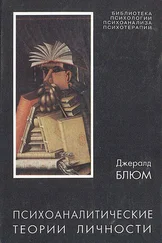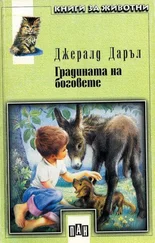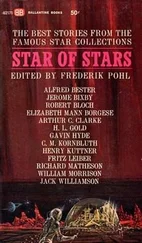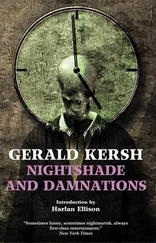“No, of course not. I have been so long out there that I tend to forget. You know, if I could only find that little fellow I might be a rich man yet. I always wanted to buy a nice little boat and go cruising around the Greek islands. A fat chance, on my wretched pay! And I sunk most of my savings in that wretched fellow Benny North, fool that I was. You remember that lout? I thought I’d discovered a real British heavyweight at last and as it turned out the damned fellow had a weak heart. No more heavyweights for me.”
“What has this to do with Sato?”
“Why, he is, or was, a phenomenon. I think he was a better wrestler than Otani. My idea was to take him all round the world and challenge all comers—boxers, wrestlers, even fencers, to stand up against him for ten minutes. He was unbelievable. Furthermore, he looked so frightful. I won a hundred and fifty quid on him at Singapore in 1938. He took on four of the biggest and best boxers and wrestlers we could lay our hands on and floored the whole lot in eleven minutes by the clock. Just a minute, I’ve got a picture in my wallet. I keep it because it looks so damn funny. Look.”
The Colonel handed me a dog-eared photograph of an oddly assorted group. There was a hairy mammoth of a man, obviously a wrestler, standing with his arms folded so that his biceps looked like coconuts, by the side of another man, almost as big, but with the scrambled features of a rough-and-tumble bruiser. There was one blond grinning man who looked like a light heavyweight, and a beetle-browed middleweight with a bulldog jaw. The Colonel was standing in the background, smiling in a fatherly way. In the foreground smiling into the camera stood a tiny Japanese. The top of his head was on a level with the big wrestler’s breastbone, but he must have measured at least two feet six inches across the shoulders—he was more than half as broad as he was tall. He was all chest and arms. The knuckles of his closed hands touched his knees. I took the picture to the light and looked more closely. The photographer’s flash-bulb had illuminated every detail. Sato had made himself even more hideous with tattooing. He was covered with things that creep and crawl, real and fabulous. A dragon snarled on his stomach. Snakes were coiled about his legs. Another snake wound itself about his right arm from forefinger to armpit. The other arm was covered with angry looking lobsters and goggle-eyed fishes, and on the left breast there was the conventionalized shape of a heart.
It was then that I uttered an astonished oath and went running to look for my old uniform, which I found, with the Reverend Arthur Titty’s pamphlet still in the inside breast pocket. The Colonel asked me what the devil was the matter with me. I smoothed out the pamphlet and gave it to him without a word.
He looked at it, and said: “How very extraordinary!” Then he put away his eyeglass and put on a pair of spectacles; peered intently at the Reverend Arthur Titty’s painstaking drawing of the Brighthelmstone Monster, compared it with the photograph of Sato and said to me, “I have come across some pretty queer things in my time, but I’m damned if I know what to make of this.”
“What sort of tattooing did your Sato have on his back?” I asked.
He replied, without hesitation, “A crimson and emerald-green hawk stooping between the shoulders and a foxy red fox chasing six bluey-green rabbits down his backbone; an octopus on the right buttock throwing out the tentacles around groin and belly—very clever piece of work—must have hurt him like the devil.”
“Look here,” I said pointing to the relevant passage in the pamphlet.
My friend the Colonel will swear horribly over trivialities. But when he is deeply moved he says: “Well! Really!” He said it now.
“But wait a minute,” I said. “This Brighton Monster scratched something on the door. The old Reverend took a copy of it. Turn over four or five pages and you’ll see it there, I think.”
The Colonel looked at the copied marks scratched by the monster with one of its own teeth on the door of its cell. The spongy old paper was crumpled and cracked, and the marks were blurred by time, and by the dampness of lumber rooms and the moisture of my body. He looked at them, found a piece of paper and a pencil, laid the paper against a wall, and copied the inscription, holding the pencil half an inch from the point. When he turned, I saw that the red of his face had faded to grayish pink.
“Well?” I said.
“Little Sato had been baptized, you know. He was a Christian, among other things. I don’t know if I mentioned it.”
“No, you didn’t. Why?”
“Why, this says: I was asleep with my wife . It was all a bad dream . Now I know that it was not a dream . God have mercy on poor Sato who must die . Hiroshima 1945 . How can it be? Sato had a wife, and they lived somewhere in Hiroshima. . . . He was in the Jap navy—submarines—and he was on leave in August, 1945, when they dropped that damned thing which I wish to God they’d never thought of. I don’t understand this. There must be a mistake somewhere. Yet this is Sato all right. What do you make of it? This beats me. I suppose, of course, poor little Sato got it when we dropped that confounded atom bomb. But—”
“I never was in favor of fiddling about with atoms,” I said, “it always seemed to me that there is a limit to what one ought to know. All those fantastic blasts and horrible disintegrations! One feels like the sorceror’s apprentice! You will observe, by the way, that this wretched Brighton Monster suffered from peculiar cancerous sores?”
The Colonel said: “Poor Sato! I liked the little fellow. But my dear Kersh, I hate to think what I can’t help thinking. To die, that’s nothing. It’s easier to die than to live, once you get the hang of it. But this nasty business—it seems to indicate that you don ’ t actually die when you run into one of those damned things. That was Sato, without a doubt. But imagine it—just imagine it! I don’t believe I ever mentioned that I was married once? You go to sleep happily, and then . . . Poor little Sato! Flipped back two hundred years. Or it might be forward two hundred years . . . Of course the earth turns and space shifts. He might have found himself in the middle of the Sahara Desert, or at the South Pole, or in some place where they’d worship him like a god straight out of heaven. But Kersh, Kersh, think of the horror of it! The nightmare—you were asleep—that turns out to be no nightmare at all. You wake up, with a sigh of relief, and there is your nightmare still. The loneliest death imaginable! Can you wonder at poor Sato’s despair? A Jap will kill himself as soon as look at you. So he ran out and threw himself into the sea. . . . How cold it must have been for him in Brighton in November!”
So, out of a salvage basket on the third floor of No. 93 Long Acre, London, W.C. 2 came the only evidence of a double death —the unique history of a man unhappily destined to be a victim of natural philosophy twice in two hundred years.
Here is food for thought, but I do not like the thought it feeds.
THE EXTRAORDINARILY HORRIBLE DUMMY
An uneasy conviction tells me that this story is true, but I hate to believe it. It was told to me by Ecco, the ventriloquist, who occupied a room next to mine in Busto’s apartment house. I hope he lied. Or perhaps he was mad? The world is so full of liars and lunatics that one never knows what is true and what is false.
All the same, if ever a man had a haunted look that man was Ecco. He was small and furtive. He had disturbing habits; five minutes of his company would have set your nerves on edge. For example, he would stop in the middle of a sentence, say Ssh! in a compelling whisper, look timorously over his shoulder and listen to something. The slightest noise made him jump. Like all Busto’s tenants, he had come down in the world. There had been a time when he topped bills and drew fifty pounds a week. Now, he lived by performing to theatre queues.
Читать дальше






